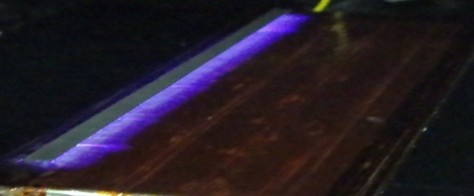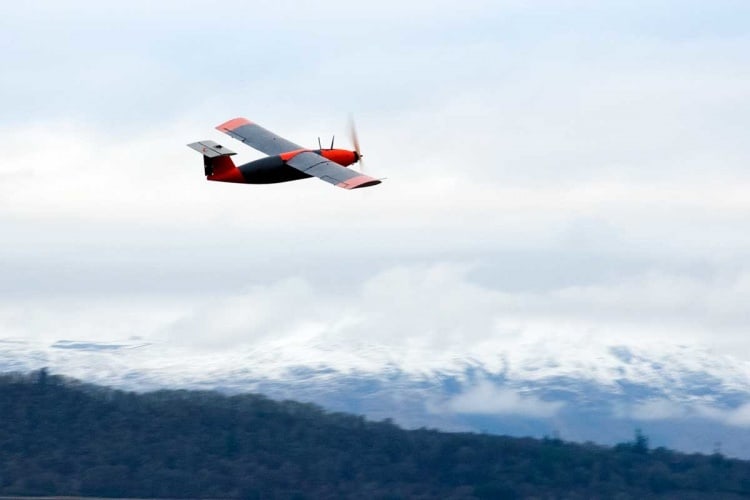When the plasma is switched on, an electrical current passes through electrodes to generate an ionised field along the wing, known as the single dielectric barrier discharge (SDBD) plasma actuator. This field acts in a similar way to hydraulic flaps, increasing lift and drag and allowing planes to fly at lower speeds without stalling.
A typical SDBD plasma actuator system consists of two electrodes separated by a dielectric layer, typically Kapton, glass, quartz or ceramics. When activated, a purplish glow is emitted and spreads out across the dielectric surface.

According to its creators, the technology has the potential to be cheaper, lighter and greener than traditional flaps. Although the plasma wings are currently only suitable for smaller aircraft such as UAVs (Unmanned Aerial Vehicles), it is hoped that further development could make the technology viable on larger planes.
The Engineer caught up with lead researcher Dr Rasool Erfani, from Manchester Met’s School of Engineering to find out more about the research and its potential applications in the future.
Where did the idea for the plasma wings originate?
In the past 10 years single dielectric barrier discharge (SDBD) actuators have shown remarkable promise for various flow control applications. The benefit of converting electrical energy into kinetic energy without the need for any moving parts, having near instantaneous response, consuming relatively low power, and a wide range of operational frequencies have made these devices an attractive alternative to other active flow control methods such as piezoelectric actuators, synthetic jets, and vortex generators.
A new kind of surface plasma called OAUGDP was introduced by Roth et al. Their investigations showed the ability of the new configuration of plasma actuator in changing drag and varying the thrust direction of flat panels and re-attachment of flow in a NACA 0015 aerofoil. Furthermore, the actuator can be operated at atmospheric pressures and does not require a sophisticated power supply.
However, to date, they have only been used at micro air vehicle Reynolds numbers (e.g. on small unmanned aircraft). Their benefits have not been fully utilised on large scales since the effectiveness of plasma actuators is limited by the maximum induced velocity they can achieve.

Are the dimensions of the device similar to current pneumatic flaps?
The dimension of the plasma actuator depends on the material and configuration of the electrodes and their thickness is in a range of micrometres to centimetres. So they are really thin and can be retrofitted on different surfaces.
How do you project plasma reliability to stack up against current flap technology?
Currently they are strong enough to be used on MAVs and UAVs. They show their effectiveness on the boundary layer manipulation, film cooling and delaying separation on turbine blades and aerofoils, and the transition point manipulation, control separation on stationary and oscillating aerofoils leading to reduced noise levels. Considering the fact that it is only recently that people are working on this, the future of glowing plasma wings is promising.
How much cheaper and more efficient might the plasma actuator prove to be?
They are cheap in power consumption which is in a range of couple of watts. Again, it is under subject of my research to optimise their efficiency in terms of electrical power consumption and their mechanical power production. The new configuration of DBDs which uses multiple encapsulated electrodes (MEE) has been shown to produce a superior and more desirable performance over the standard actuator design.
Also, through development and employment of this innovative flow control mechanisms the need for heavy and bulky devices along the wing would be eliminated, leading to lighter aircraft and the lower consumption of fuel and hence, lower emissions.





Project to investigate hybrid approach to titanium manufacturing
What is this a hybrid of? Superplastic forming tends to be performed slowly as otherwise the behaviour is the hot creep that typifies hot...